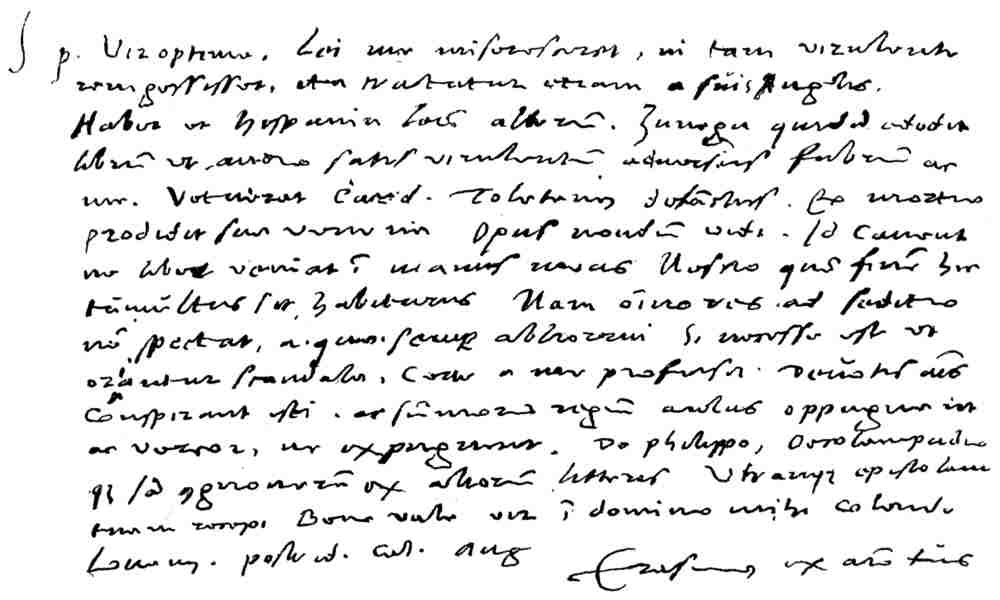Erasmus De Copia Pdf

Biographical note Dutch humanist and theologian. Erasmus was a classical scholar who wrote in a 'pure' Latin style and enjoyed the sobriquet 'Prince of the Humanists.'
He has been called 'the crowning glory of the Christian humanists.' Using humanist techniques for working on texts, he prepared important new Latin and Greek editions of the New Testament. These raised questions that would be influential in the Protestant Reformation and Catholic Counter-Reformation. He also wrote The Praise of Folly, Handbook of a Christian Knight, On Civility in Children, Copia: Foundations of the Abundant Style, Julius Exclusus, and many other works.
Roterodami de duplici copia verborum ac rerum commentarii duo; Eras. De laudibus literariae societatis, reip. Ac magistratuum urbis Argentinae, epistola ad Jacobum Wimphelingum plane Erasmica. Pehli nazar mein song download.
• • • Desiderius Erasmus Roterodamus (; 28 October 1466 – 12 July 1536), known as Erasmus or Erasmus of Rotterdam, was a Dutch who was the greatest scholar of the. Originally trained as a, Erasmus was an important figure in classical scholarship who wrote in a pure Latin style. Among humanists he enjoyed the 'Prince of the Humanists', and has been called 'the crowning glory of the Christian humanists'. Using humanist techniques for working on texts, he prepared important new and editions of the, which raised questions that would be influential in the. He also wrote,,,,,, and many other works. Erasmus lived against the backdrop of the growing European religious, but while he was critical of the abuses within the Catholic Church and called for reform, he kept his distance from, and and continued to recognise the authority of the pope, emphasizing a middle way with a deep respect for traditional faith, piety and grace, rejecting Luther's emphasis on faith alone. Erasmus remained a member of the Roman Catholic Church all his life, remaining committed to reforming the church and its clerics' abuses from within.
He also held to the Catholic doctrine of, which some Reformers rejected in favor of the doctrine of. His middle road (' ') approach disappointed, and even angered, scholars in both camps.
Erasmus died suddenly in in 1536 while preparing to return to, and was buried in, the former cathedral of the city. A bronze statue of Erasmus was erected in 1622 in his city of birth, replacing an earlier work in stone. Portrait of Desiderius Erasmus by, 1526, engraved in, Germany. Most likely in 1487, poverty forced Erasmus into the as a of St. Augustine at the of, in. He took vows there in late 1488, and was to the at about the age of 25, in 1492. It is said that he never seemed to have actively worked as a priest for a longer time, [ ] and certain abuses in were among the chief objects of his later calls to reform the Church from within.
While at Stein, Erasmus fell in love with a fellow canon, Servatius Rogerus, and wrote a series of passionate letters in which he called Rogerus 'half my soul'. He wrote, 'I have wooed you both unhappily and relentlessly'. This correspondence contrasts sharply with the generally detached and much more restrained attitude he showed in his later life.
Later, while tutoring in, he was suddenly dismissed by the guardian of Thomas Grey. Some have taken this as evidence of an illicit affair. Ayyappan songs tamil download by kupppusamy. No personal denunciation was made of Erasmus during his lifetime, however, and he took pains in later life to distance these earlier episodes by condemning in his works, and praising sexual desire in marriage between men and women.

Soon after his priestly ordination, he got his chance to leave the canonry when offered the post of secretary to the, Henry of Bergen, on account of his great skill in and his reputation as a. To allow him to accept that post, he was given a temporary from his religious vows on the grounds of poor health and love of Humanistic studies, though he remained a priest. Later made the dispensation permanent, a considerable privilege at the time. Education and scholarship [ ]. Acknowledgement page engraved and published by, 1516 Publication and editions [ ] Erasmus said it was 'rushed into print rather than edited', resulting in a number of transcription errors. After comparing what writings he could find, Erasmus wrote corrections between the lines of the manuscripts he was using (among which was ) and sent them as proofs to Froben. His hurried effort was published by his friend of Basel in 1516 and thence became the first published Greek New Testament, the, diligenter ab Erasmo Rot.
Recognitum et Emendatum. Erasmus used several Greek manuscript sources because he did not have access to a single complete manuscript. Most of the manuscripts were, however, late Greek manuscripts of the Byzantine textual family and Erasmus used the oldest manuscript the least because 'he was afraid of its supposedly erratic text.' He also ignored much older and better manuscripts that were at his disposal. In the second (1519) edition, the more familiar term Testamentum was used instead of Instrumentum. This edition was used by in his, written for people who could not understand Latin. Together, the first and second editions sold 3,300 copies.